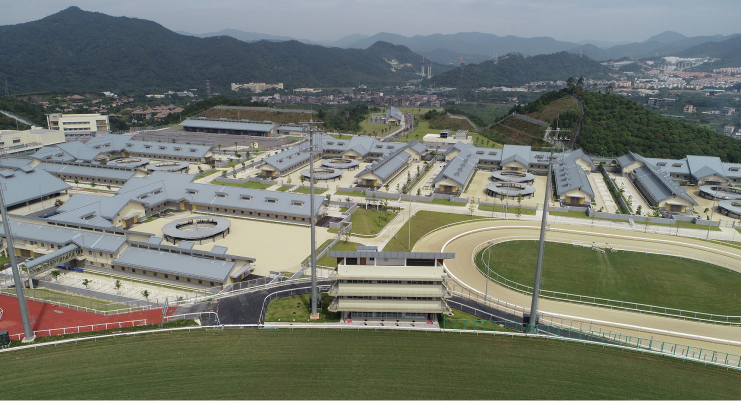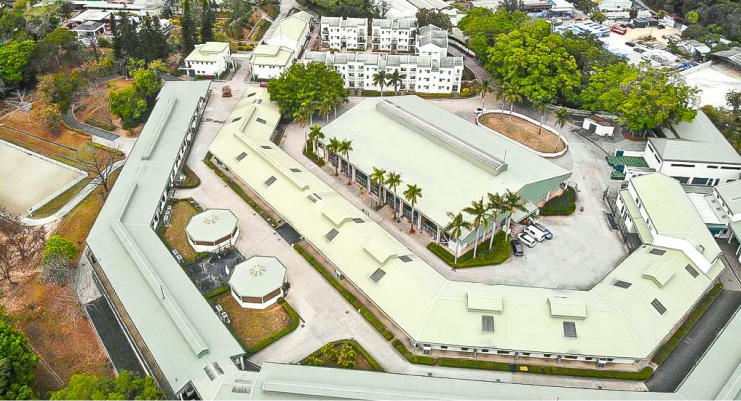





When a racehorse is imported into Hong Kong a fee is collected from the owners as a contribution towards their horse's retirement.
When the horse retires from racing, the owner can choose to export the horse to a country of their preference and their fee is returned towards the overseas export costs. In this instance a replacement permit can be obtained allowing the owner to bring a new horse into Hong Kong for racing. Alternatively, if an owner would prefer not to retain ownership and export their horse, they can transfer the horse to the care of the Club. The horse will then undergo assessment for entry into the RESTART Retraining Programme. The retirement fee is retained for these horses as a contribution to the funding of the RESTART Retraining Programme along with additional funding provided by the Club.
The Club has provided a structured retraining programme for retired racehorses since 1964 when Beas River, the Club's national equestrian centre was established as a home for retired racehorses. The programme has expanded and now includes the Retired Horse Unit at Conghua Racecourse, which opened in 2020, alongside the original Retraining Unit based at Beas River Equestrian Centre.

Conghua, Guangzhou, China
Maximum Number of Retired Horses:
102
Facilities:
Spelling (turn out) yards, lunge pen, horse walkers, swimming pools, sea walker, veterinary hospital and equine therapy centre.

New Territories, Hong Kong SAR
Maximum Number of Retired Horses:
80
Facilities:
5 paddocks (arenas), 2 lunge pens, horse walkers, outdoor riding track, cross-country course, hacking trail, spelling (turn out) yards, rolling boxes, veterinary station, farrier workshop.
The facilities at both retired horse locations aid a varied and diverse training programme with the goal of producing well-rounded, relaxed horses that can continue their training and education in a new career once the initial retraining phase is completed.
Each retired horse's journey towards their second career will be unique, and always has the welfare of each horse as the priority.
The journey is based on multiple factors such as medical history, physical maturity and strength, experience, temperament and trainability and is overseen and directed by the Club's veterinary team. Horses will generally have a vet check every 1-2 weeks until they are established in full ridden work.
The first step in each horse's transition from racehorse to their second career is an assessment by a member of the veterinary team at Sha Tin or Conghua. This ensures the horse is suitable to enter retraining, and horses who have retired due to injury have an individualised rehabilitation plan assigned.
Retired horses will transfer to the Retired Horse Unit at the Club's training facility in Conghua for a period of downtime before they start their retraining journey. The Retired Horse Unit has access to a variety of facilities including turn out paddocks and a dedicated equine rehabilitation unit.
Horses that have sustained injuries with a good prognosis for recovery will have a tailored rehabilitation programme for their injury type and may spend time in the Equine Rehabilitation Unit undergoing chilled spa, laser, water treadmill or sea walker sessions to best aid their recovery.
The transition period in the Retired Horse Unit allows horses to adapt to new equestrian routines, feeding regimens and stable management practices which can be significantly different to those in racing. The amount of time a horse spends in the Retired Horse Unit is individual to each horse, but ranges from a few weeks to several months.
When the experienced care team and vets assess a horse as ready to start the retraining process, the horse is transferred to the Retraining Unit at Beas River Equestrian Centre.
On arrival, each horse is again assessed by a vet and a structured, progressive training programme is assigned according to their health and temperament. A horse will be allocated to one of the Club's specialist retraining riders, who are experienced at transitioning horses from the track to purposeful second careers.
The process starts with ground work and progresses slowly to hacking, light work and on to full ridden work. The veterinary and retraining teams regularly assess each horse's progress and programmes are adapted when necessary.
At regular intervals along their retraining journey, horses are observed in a ridden assessment. The assessment is an opportunity for an experienced panel consisting of vets, coaches, trainers and management to review each horse's progress and consider the horse's most suitable second career option.
The Club's aim is to have each horse in the best possible role for their individual history, trainability and talents.
A horse graduates from the retraining unit when they are ready to move on to their second career.
There are variety of second career options for horses in Hong Kong or overseas.
There are a number of second career options available to horses that graduate from the Retired Racehorse Programme.
Photo courtesy of Brya Ingram Photography